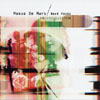 In the years between this collection being first announced until thetime of its release (this past week), almost anybody could haveprobably tracked down the out of print recordings contained herein.With that in mind, I can't deny that I'm somewhat jaded about therelease before even possessing it. Now that it's in my hands, I'mrelieved to finally have it, excited as a longtime fan, but stillsomewhat put off by its posturing as an EP collection, as it neglectssome songs from the original EPs and was arranged in a nonsensicalrandom order. On the surface, Mouse On Mars have always appeared to benonsensical (just pick up any album of theirs and look at the songtitles!). However, the music has always been cold-calculated, withstrong tendencies to avoid the trends that have come and gone sincethey started releasing music back in 1994. For this, the duo of Tomaand St. Werner have perpetually remained ahead of the curve. They couldhave easily jumped on bandwagons of drum 'n bass or glitch, but as thetrends became more minimal, more was added to their sound. They heldtheir ground with music that was always dancable and rich withcaptivating melodies and unique sounds from song to song. Starting in1994 with the FroschEP, the duo are clearly observably unwilling to accept pre-packagedpreset sounds and pre-programmed beats. While appearing on compilationslike Trance Europe ExpressBib EP, with songs like "Selektron," slower than what they were used to doing before, but never dull at any point. By 1997's Cache Coeur NaifEP, the band has kept the beat intact, bottomed it out with arump-shaking intensity, added the vocals of Stereolab's LaetitiaSadier, and found a way to mangle original sounds of guitars and basickeyboards beyond original recognition while still maintaining a sexycatchiness. If this isn't considered intelligent dance music, then Idon't know what to think. With the most recent recording on this discnow six years old, the music has held up amazingly well compared to themusic of many of MoM's contemporaries.
In the years between this collection being first announced until thetime of its release (this past week), almost anybody could haveprobably tracked down the out of print recordings contained herein.With that in mind, I can't deny that I'm somewhat jaded about therelease before even possessing it. Now that it's in my hands, I'mrelieved to finally have it, excited as a longtime fan, but stillsomewhat put off by its posturing as an EP collection, as it neglectssome songs from the original EPs and was arranged in a nonsensicalrandom order. On the surface, Mouse On Mars have always appeared to benonsensical (just pick up any album of theirs and look at the songtitles!). However, the music has always been cold-calculated, withstrong tendencies to avoid the trends that have come and gone sincethey started releasing music back in 1994. For this, the duo of Tomaand St. Werner have perpetually remained ahead of the curve. They couldhave easily jumped on bandwagons of drum 'n bass or glitch, but as thetrends became more minimal, more was added to their sound. They heldtheir ground with music that was always dancable and rich withcaptivating melodies and unique sounds from song to song. Starting in1994 with the FroschEP, the duo are clearly observably unwilling to accept pre-packagedpreset sounds and pre-programmed beats. While appearing on compilationslike Trance Europe ExpressBib EP, with songs like "Selektron," slower than what they were used to doing before, but never dull at any point. By 1997's Cache Coeur NaifEP, the band has kept the beat intact, bottomed it out with arump-shaking intensity, added the vocals of Stereolab's LaetitiaSadier, and found a way to mangle original sounds of guitars and basickeyboards beyond original recognition while still maintaining a sexycatchiness. If this isn't considered intelligent dance music, then Idon't know what to think. With the most recent recording on this discnow six years old, the music has held up amazingly well compared to themusic of many of MoM's contemporaries. In the years between this collection being first announced until thetime of its release (this past week), almost anybody could haveprobably tracked down the out of print recordings contained herein.With that in mind, I can't deny that I'm somewhat jaded about therelease before even possessing it. Now that it's in my hands, I'mrelieved to finally have it, excited as a longtime fan, but stillsomewhat put off by its posturing as an EP collection, as it neglectssome songs from the original EPs and was arranged in a nonsensicalrandom order. On the surface, Mouse On Mars have always appeared to benonsensical (just pick up any album of theirs and look at the songtitles!). However, the music has always been cold-calculated, withstrong tendencies to avoid the trends that have come and gone sincethey started releasing music back in 1994. For this, the duo of Tomaand St. Werner have perpetually remained ahead of the curve. They couldhave easily jumped on bandwagons of drum 'n bass or glitch, but as thetrends became more minimal, more was added to their sound. They heldtheir ground with music that was always dancable and rich withcaptivating melodies and unique sounds from song to song. Starting in1994 with the FroschEP, the duo are clearly observably unwilling to accept pre-packagedpreset sounds and pre-programmed beats. While appearing on compilationslike Trance Europe ExpressBib EP, with songs like "Selektron," slower than what they were used to doing before, but never dull at any point. By 1997's Cache Coeur NaifEP, the band has kept the beat intact, bottomed it out with arump-shaking intensity, added the vocals of Stereolab's LaetitiaSadier, and found a way to mangle original sounds of guitars and basickeyboards beyond original recognition while still maintaining a sexycatchiness. If this isn't considered intelligent dance music, then Idon't know what to think. With the most recent recording on this discnow six years old, the music has held up amazingly well compared to themusic of many of MoM's contemporaries.
In the years between this collection being first announced until thetime of its release (this past week), almost anybody could haveprobably tracked down the out of print recordings contained herein.With that in mind, I can't deny that I'm somewhat jaded about therelease before even possessing it. Now that it's in my hands, I'mrelieved to finally have it, excited as a longtime fan, but stillsomewhat put off by its posturing as an EP collection, as it neglectssome songs from the original EPs and was arranged in a nonsensicalrandom order. On the surface, Mouse On Mars have always appeared to benonsensical (just pick up any album of theirs and look at the songtitles!). However, the music has always been cold-calculated, withstrong tendencies to avoid the trends that have come and gone sincethey started releasing music back in 1994. For this, the duo of Tomaand St. Werner have perpetually remained ahead of the curve. They couldhave easily jumped on bandwagons of drum 'n bass or glitch, but as thetrends became more minimal, more was added to their sound. They heldtheir ground with music that was always dancable and rich withcaptivating melodies and unique sounds from song to song. Starting in1994 with the FroschEP, the duo are clearly observably unwilling to accept pre-packagedpreset sounds and pre-programmed beats. While appearing on compilationslike Trance Europe ExpressBib EP, with songs like "Selektron," slower than what they were used to doing before, but never dull at any point. By 1997's Cache Coeur NaifEP, the band has kept the beat intact, bottomed it out with arump-shaking intensity, added the vocals of Stereolab's LaetitiaSadier, and found a way to mangle original sounds of guitars and basickeyboards beyond original recognition while still maintaining a sexycatchiness. If this isn't considered intelligent dance music, then Idon't know what to think. With the most recent recording on this discnow six years old, the music has held up amazingly well compared to themusic of many of MoM's contemporaries. With his band Kinski, guitarist Chris Martin engages in noisy,concussive, and layered rock that dwarves most standard rock with itsmassive weight and intensity. Under his solo moniker, Ampbuzz, Martintakes the spirit of his Kinski work and uses it to create a patient,meditative album that is every bit as intricate and powerful. As soonas the opening track "Bubbles" begins, it is clear that This is My Ampbuzzis thematically centered around ocean imagery, and the shifting droneof the album evokes this concept perfectly. Not a single element seemstagged on; every buzz, layer, and loop seems to reinforce the dark,fluid tone of the album. "Center for Clouds" begins with a deep rushinglike water against your eardrums, then builds around an ebbing two notebass line that's surrounded by static gusts and washes, giving thesensation of bobbing up and down in ocean waves. "Soft Currency"follows with a shimmering drone that is interrupted by a frothing,churning noise that sounds like a struggling scuba diver's regulator ora fish tank filter's last gasp. "Diving Instructions" is a sustained,foreboding track full of reversed cymbal hits and sonic jetsam thatleads into the panic pulse of "Welcome to the Ocean Floor." The descentis complete, and a deep, resonant buzz overtakes the scene. It'sdisorienting and unsettling, as the sound moans and oscillates just outof sight. The final track, "Underwater Bomb," doesn't explode into afury, but instead releases the built up tension of the precedingpieces. This is My Ampbuzz is a fully-rendered, fully-realizedlistening experience that manages to vividly capture an image, from theglistening beauty of the surface to the chilling, claustrophobicdepths.
With his band Kinski, guitarist Chris Martin engages in noisy,concussive, and layered rock that dwarves most standard rock with itsmassive weight and intensity. Under his solo moniker, Ampbuzz, Martintakes the spirit of his Kinski work and uses it to create a patient,meditative album that is every bit as intricate and powerful. As soonas the opening track "Bubbles" begins, it is clear that This is My Ampbuzzis thematically centered around ocean imagery, and the shifting droneof the album evokes this concept perfectly. Not a single element seemstagged on; every buzz, layer, and loop seems to reinforce the dark,fluid tone of the album. "Center for Clouds" begins with a deep rushinglike water against your eardrums, then builds around an ebbing two notebass line that's surrounded by static gusts and washes, giving thesensation of bobbing up and down in ocean waves. "Soft Currency"follows with a shimmering drone that is interrupted by a frothing,churning noise that sounds like a struggling scuba diver's regulator ora fish tank filter's last gasp. "Diving Instructions" is a sustained,foreboding track full of reversed cymbal hits and sonic jetsam thatleads into the panic pulse of "Welcome to the Ocean Floor." The descentis complete, and a deep, resonant buzz overtakes the scene. It'sdisorienting and unsettling, as the sound moans and oscillates just outof sight. The final track, "Underwater Bomb," doesn't explode into afury, but instead releases the built up tension of the precedingpieces. This is My Ampbuzz is a fully-rendered, fully-realizedlistening experience that manages to vividly capture an image, from theglistening beauty of the surface to the chilling, claustrophobicdepths. 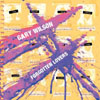 Those captivated by the skeezy sound of the Gary Wilson are in for atreat, as enough songs have been uncovered for a second album ofmaterial previously unavailable on compact disc. For those who don'thave last year's awesome reissue of You Think You Really Know Me,Wilson was man who simply wasn't afraid to say exactly what's on hismind, and it's mostly about trying to get into a girl's pants.Unsurprisingly, this context is backed by the sound of when low budgetporn and Christmas decorations crash in a tavern with upturnedbarstools and regulars passed out in their own cigarette ashes. Theresult is actually amazingly catchy, with slick bass riffs, cleverdrumming and the piano and keyboard work of a dedicated talent. Thisdisc collects a variety of scarce singles and B-sides, and aged demos,with loads of pictures and detailed accounts of the years, places andthe age of Wilson when the tunes were recorded. Included are a fewinstrumental soundtracky jazz jams, like the brilliant "AnotherGalaxy," to adventurous, stream-of-consciouness tunes like "You Took MeOn a Walk Into My Mirror." This would never have been a follow-up tohis other album, originally released in 1978, but, as the titlesuggests, a selection of songs for numerous love desires, longforgotten over time. Judging from the liner notes and story aboutWilson returning to his parents home last year, there's still morestuff yet to resurface. I'm completely hooked and will certainly bewaiting. -
Those captivated by the skeezy sound of the Gary Wilson are in for atreat, as enough songs have been uncovered for a second album ofmaterial previously unavailable on compact disc. For those who don'thave last year's awesome reissue of You Think You Really Know Me,Wilson was man who simply wasn't afraid to say exactly what's on hismind, and it's mostly about trying to get into a girl's pants.Unsurprisingly, this context is backed by the sound of when low budgetporn and Christmas decorations crash in a tavern with upturnedbarstools and regulars passed out in their own cigarette ashes. Theresult is actually amazingly catchy, with slick bass riffs, cleverdrumming and the piano and keyboard work of a dedicated talent. Thisdisc collects a variety of scarce singles and B-sides, and aged demos,with loads of pictures and detailed accounts of the years, places andthe age of Wilson when the tunes were recorded. Included are a fewinstrumental soundtracky jazz jams, like the brilliant "AnotherGalaxy," to adventurous, stream-of-consciouness tunes like "You Took MeOn a Walk Into My Mirror." This would never have been a follow-up tohis other album, originally released in 1978, but, as the titlesuggests, a selection of songs for numerous love desires, longforgotten over time. Judging from the liner notes and story aboutWilson returning to his parents home last year, there's still morestuff yet to resurface. I'm completely hooked and will certainly bewaiting. -  Austrian label Laton together with Vienna-based journalist's collectiveRedaktionsbuero have put out this thirteen track compilation ofelectronic music packaged together with a sort of tabloid publicationcontaining 12 pages of text relating to the music and two poster-sizedx-ray images of electronic equipment. The CD includes contributionsfrom Benzo, Pan Sonic, Pomassl, Fon, Alva Noto, Alexei Borisov,Thilges3, Auxpan, Terre Thaemlitz, Mira Calix, Udo Wid, Tommi Grönlund& Petteri Nisunen, and CM von Hausswolff. The presentation makes itclear that the paper document is to be taken at least as seriously asthe digital one. At first I was pleased with the whole thing: it's anice size, has something to read and some nice pictures bigger eventhan in a gatefold LP. However, with the exception of Alexej Borisov'sinteresting account of the Russian music scene, the essays are verydisappointing—variously banal, vacuous and old ideas dressed up inirritatingly self-aggrandizing language. The CD itself is a mixed bagand as such the high points stand out. Pan Sonic provide a powerful,visceral layering of hum and buzz; Noto's piece is a haunting,throbbing soundscape ornamented with pretty electro-gestures drenchedin reverb; and Thaemlitz's fascinating composition combines trashylooped disco samples with potently inhuman synthetic sounds, machinenoises and calculated sequences that make a dramatic and disturbingcontrast with the pop music backdrop. For me, it functions as a rathereffective indictment of the easy—and vaguely cowardly—abstraction ofsome of the music on this CD and so popular now elsewhere. Too much ofthe rest of the music relies on hackneyed, clicky rhythmicconstructions or on conventional forms executed with insufficient tasteor skill. I suspect that the musicians are less to blame for this thanthe compilers since for some of them we know that in other contextstheir music can be of value. The stand out winner for me is the threeminute "Til," by young Icelandic newcomer Elvar Már Kjartans akaAuxpan. Sounding a bit like "Kytkenta - Connection," from Vainio's KajaCD, it is a beautiful ripping noise, evoking the power of electricityto move, burn and destroy. This is one of those extremely rare andexceptional pieces of music that is so satisfying that it can turn yourday around.
Austrian label Laton together with Vienna-based journalist's collectiveRedaktionsbuero have put out this thirteen track compilation ofelectronic music packaged together with a sort of tabloid publicationcontaining 12 pages of text relating to the music and two poster-sizedx-ray images of electronic equipment. The CD includes contributionsfrom Benzo, Pan Sonic, Pomassl, Fon, Alva Noto, Alexei Borisov,Thilges3, Auxpan, Terre Thaemlitz, Mira Calix, Udo Wid, Tommi Grönlund& Petteri Nisunen, and CM von Hausswolff. The presentation makes itclear that the paper document is to be taken at least as seriously asthe digital one. At first I was pleased with the whole thing: it's anice size, has something to read and some nice pictures bigger eventhan in a gatefold LP. However, with the exception of Alexej Borisov'sinteresting account of the Russian music scene, the essays are verydisappointing—variously banal, vacuous and old ideas dressed up inirritatingly self-aggrandizing language. The CD itself is a mixed bagand as such the high points stand out. Pan Sonic provide a powerful,visceral layering of hum and buzz; Noto's piece is a haunting,throbbing soundscape ornamented with pretty electro-gestures drenchedin reverb; and Thaemlitz's fascinating composition combines trashylooped disco samples with potently inhuman synthetic sounds, machinenoises and calculated sequences that make a dramatic and disturbingcontrast with the pop music backdrop. For me, it functions as a rathereffective indictment of the easy—and vaguely cowardly—abstraction ofsome of the music on this CD and so popular now elsewhere. Too much ofthe rest of the music relies on hackneyed, clicky rhythmicconstructions or on conventional forms executed with insufficient tasteor skill. I suspect that the musicians are less to blame for this thanthe compilers since for some of them we know that in other contextstheir music can be of value. The stand out winner for me is the threeminute "Til," by young Icelandic newcomer Elvar Már Kjartans akaAuxpan. Sounding a bit like "Kytkenta - Connection," from Vainio's KajaCD, it is a beautiful ripping noise, evoking the power of electricityto move, burn and destroy. This is one of those extremely rare andexceptional pieces of music that is so satisfying that it can turn yourday around. - Pan Sonic - Eriö-Osuus
- Terre Thaemlitz - TGA Prototype
- Auxpan - Til
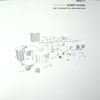 The title track of this three-song EP makes for an awesome continuation of the crisp, groove-driven compositions of 2002's Every Day,which incorporated a full live band rather than relying as heavily onsampled rhythm sections and re-mixing as previous releases. The upbeatand lyrically positive Horizon features the soulful singing ofNiara Scarlett (who also co-wrote the tune) backed by the group'sdriving, latin-jazz inspired rhythm section. Voiced mainly by a Rhodespiano, the band's grooves shift comfortably and dig deep throughoutdifferent sections of the tune. "Oregon" features the duo of bandleader J. Swinscoe and saxophonist Tom Chant for a composition whichoriginates as a sombre, repetitive chord progression from the keyboardthat builds into multiple layers of soprano sax, bass clarinet andwhirring electronic effects. Closing out the EP, and taking up theentire second side if you get the vinyl, is the six-and-a-half minutePatrick Carpenter (aka PC/Mr. P) re-mix, "Evolution II," which uses theoutstanding Fontella Bass vocal track from "Evolution" as its center.Opening with some spacious string swells and drones, the tune kicksinto a burning, jazzy groove to back the vocals and eventually draw ina slightly distorted sub-bass line to fill it all out. Carpenter'skeyboards and re-mixing have the vocals sounding even better in thiscontext than in the notable original. This EP is well worth hearing,even for this track alone.
The title track of this three-song EP makes for an awesome continuation of the crisp, groove-driven compositions of 2002's Every Day,which incorporated a full live band rather than relying as heavily onsampled rhythm sections and re-mixing as previous releases. The upbeatand lyrically positive Horizon features the soulful singing ofNiara Scarlett (who also co-wrote the tune) backed by the group'sdriving, latin-jazz inspired rhythm section. Voiced mainly by a Rhodespiano, the band's grooves shift comfortably and dig deep throughoutdifferent sections of the tune. "Oregon" features the duo of bandleader J. Swinscoe and saxophonist Tom Chant for a composition whichoriginates as a sombre, repetitive chord progression from the keyboardthat builds into multiple layers of soprano sax, bass clarinet andwhirring electronic effects. Closing out the EP, and taking up theentire second side if you get the vinyl, is the six-and-a-half minutePatrick Carpenter (aka PC/Mr. P) re-mix, "Evolution II," which uses theoutstanding Fontella Bass vocal track from "Evolution" as its center.Opening with some spacious string swells and drones, the tune kicksinto a burning, jazzy groove to back the vocals and eventually draw ina slightly distorted sub-bass line to fill it all out. Carpenter'skeyboards and re-mixing have the vocals sounding even better in thiscontext than in the notable original. This EP is well worth hearing,even for this track alone. 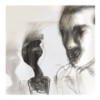 Pele have always produced instrumental music that stuns and impresses, their live shows are never to be missed, and 2000's The Nudeswas a solid record with practiced musicianship and quality melodies.They're also incredibly autonomous, as guitarist Chris Rosenau is atalented recording engineer, so they can record anywhere with littlefuss. Their music is also quite feral in nature, as though it is a wildanimal that needs taming. Pele don't make music, they attack it, andthe story is no different on Enemies. In fact, they've steppedup the violence and are going for broke. These songs have a psychoticenergy, a fervor, that drives them along at a breakneck pace but alsohas the good sense to take a break now and then. The lineup is the sameas The Nudes with one very nice addition in Jon Minor oncomputer. His contributions are what really make this album shine, asthe strange voices and wirey noises give this music a new edge on theold blade. Rosenau's guitar has a fairly similar tone to the one it'shad previously, and the band is as cohesive as ever, even with thestrangeness of Minor's contributions. "Crisis Win" opens the album withJon Mueller's manic drumming and hand claps, and just unleashes on theears for a full eight minutes. Elsewhere, "Hooves" and "HospitalSports" show a new ambient Pele, with Minor's computer talents at theforefront. The energy is what makes their music so compelling, though,as when it returns on "Hummingbirds Eat," you can't help but crank thevolume and get moving. "Cooking Light," a nine-minute shuffle closesthe album, and captures the beautiful improvisation of the band at itsbest. This album is an old friend, a warm blanket, the glove that fitsevery time. With Minor, Pele is a new and brave band with a lot ofground to cover.
Pele have always produced instrumental music that stuns and impresses, their live shows are never to be missed, and 2000's The Nudeswas a solid record with practiced musicianship and quality melodies.They're also incredibly autonomous, as guitarist Chris Rosenau is atalented recording engineer, so they can record anywhere with littlefuss. Their music is also quite feral in nature, as though it is a wildanimal that needs taming. Pele don't make music, they attack it, andthe story is no different on Enemies. In fact, they've steppedup the violence and are going for broke. These songs have a psychoticenergy, a fervor, that drives them along at a breakneck pace but alsohas the good sense to take a break now and then. The lineup is the sameas The Nudes with one very nice addition in Jon Minor oncomputer. His contributions are what really make this album shine, asthe strange voices and wirey noises give this music a new edge on theold blade. Rosenau's guitar has a fairly similar tone to the one it'shad previously, and the band is as cohesive as ever, even with thestrangeness of Minor's contributions. "Crisis Win" opens the album withJon Mueller's manic drumming and hand claps, and just unleashes on theears for a full eight minutes. Elsewhere, "Hooves" and "HospitalSports" show a new ambient Pele, with Minor's computer talents at theforefront. The energy is what makes their music so compelling, though,as when it returns on "Hummingbirds Eat," you can't help but crank thevolume and get moving. "Cooking Light," a nine-minute shuffle closesthe album, and captures the beautiful improvisation of the band at itsbest. This album is an old friend, a warm blanket, the glove that fitsevery time. With Minor, Pele is a new and brave band with a lot ofground to cover.  While the latest release on Chemikal Underground is from a small groupof loud Glaswegans with soft tendencies, it bears a very importantdisclaimer that "this album does not feature members of any bands whoare more successful than we are." The group should need no referencepoint aside from themselves by this time, as their first album, 2001's A Story in Whitewas easily one of the best rock albums that year that most people neverheard. If there are any expectations, Aereogramme have nobody to blamebut themselves. Once again, the album opens with a raucous thud,"Indescretion #243," where the band firmly grabs your attention fromwherever it is with distorted guitars, loud drums, and vocals fromsinger/guitarist Craig B as fiery as his Scottish red hair. Notentirely unlike the opener from the last, it's not an entirelymemorable tune but it sure infectioulsly takes hostage of the psycheand stops all trains of thought. "Now that we've got your attention,let's give you something wonderful,..." is their familiar motive. Likeone of my favorite songs from 2001, "Post Tour Pre Judgement," the bandproceeds onwards with the second tune, "Black Path," which could easilybe one of the most fantastic songs currently out. It's through thisthat the band introduces their softer side without being any lessbombastic. Here, bells, strings, and special effects all add to thegrandeur of this humble quartet with stadium rock pipe dreams in a songstill tougher than any hair band ballad. While the experimentation withelectronics, fancy-schmantzy time signature changes, odd answeringmachine messages, and strings continues along with the occasionalscreams and quiet breakdowns throughout the record, I'm sadly leftthinking most of this album is technique over substance. While theirability and skills (both in performance and production) have becomenoticably stronger, I'm aching for some of the catchier songs like"Hatred," that would get stuck in my head days after hearing it. Notfor one minute is this album predictable. From the synthetic rhythms of"A Simple Process of Elimination," to the deceptively thrash opening of"Older," there's always an element of mystery as to what's lurkingaround the corner. This is somewhat refreshing for somebody who getsbored easily, but, adversely, can be hard to really get a full grip on,making the songs more difficult to really sink in. Songs like thealbum's other power ballad, "In Gratitude," really break through likeblinding rays of sunshine after a murky, tumultuous thunderstorm, butin the end, I think I'd choose to be more patient for a bettercollection of deeper songs that don't always sound like a thrash bandtrying to see how many wall hangings they can vibrate. Don't get mewrong, there isn't a low point on this album anywhere, but perhaps Imight have just expected something different. They will be touringagain in the next couple months and after seeing them three times onthe support of the last album, I can't recommend the live show enough.(Additional note: music videos are still available to view at thelabels' web sites.) -
While the latest release on Chemikal Underground is from a small groupof loud Glaswegans with soft tendencies, it bears a very importantdisclaimer that "this album does not feature members of any bands whoare more successful than we are." The group should need no referencepoint aside from themselves by this time, as their first album, 2001's A Story in Whitewas easily one of the best rock albums that year that most people neverheard. If there are any expectations, Aereogramme have nobody to blamebut themselves. Once again, the album opens with a raucous thud,"Indescretion #243," where the band firmly grabs your attention fromwherever it is with distorted guitars, loud drums, and vocals fromsinger/guitarist Craig B as fiery as his Scottish red hair. Notentirely unlike the opener from the last, it's not an entirelymemorable tune but it sure infectioulsly takes hostage of the psycheand stops all trains of thought. "Now that we've got your attention,let's give you something wonderful,..." is their familiar motive. Likeone of my favorite songs from 2001, "Post Tour Pre Judgement," the bandproceeds onwards with the second tune, "Black Path," which could easilybe one of the most fantastic songs currently out. It's through thisthat the band introduces their softer side without being any lessbombastic. Here, bells, strings, and special effects all add to thegrandeur of this humble quartet with stadium rock pipe dreams in a songstill tougher than any hair band ballad. While the experimentation withelectronics, fancy-schmantzy time signature changes, odd answeringmachine messages, and strings continues along with the occasionalscreams and quiet breakdowns throughout the record, I'm sadly leftthinking most of this album is technique over substance. While theirability and skills (both in performance and production) have becomenoticably stronger, I'm aching for some of the catchier songs like"Hatred," that would get stuck in my head days after hearing it. Notfor one minute is this album predictable. From the synthetic rhythms of"A Simple Process of Elimination," to the deceptively thrash opening of"Older," there's always an element of mystery as to what's lurkingaround the corner. This is somewhat refreshing for somebody who getsbored easily, but, adversely, can be hard to really get a full grip on,making the songs more difficult to really sink in. Songs like thealbum's other power ballad, "In Gratitude," really break through likeblinding rays of sunshine after a murky, tumultuous thunderstorm, butin the end, I think I'd choose to be more patient for a bettercollection of deeper songs that don't always sound like a thrash bandtrying to see how many wall hangings they can vibrate. Don't get mewrong, there isn't a low point on this album anywhere, but perhaps Imight have just expected something different. They will be touringagain in the next couple months and after seeing them three times onthe support of the last album, I can't recommend the live show enough.(Additional note: music videos are still available to view at thelabels' web sites.) -  It's hard to talk about this album without referring back to thephenomenal track from 2001, "(This is the Dream of) Evan and Chan" byDntel, as that was the first collaboration between Death Cab forCutie's singer Ben Gibbard and Jimmy Tamborello, the one-man powerhousebehind Dntel. This was possibly one of my favorite songs from one of myfavorite albums of 2001, where chaos and mayhem was tied together by afrail, unobtrusive voice, quietly singing an almost nonsensical cartoonstory. Naturally, this type of collaboration, which yielded results noless than monumental, opened the opportunity for future works betweenthe two entities with potentially similar results. The end result,however, this disc, has got to be one of the weakest pieces ofelectronic dribble since Anything Box. I swear, I've heard numerousrougher, tougher, more ballsy recordings from other electronic maleduos like the Pet Shop Boys, Soft Cell, and Electronic. Even Erasuresounds like a mannish testosterone-fuelled rockhouse compared to ThePostal Service! Whereas Tamborello's music as Dntel was clearly notwritten for the sole purpose of being the backdrop of vocals, it wasnot dependent on a singer, the music could have clearly stood alone.The disjunct rhythms, distorted sounds and unpredictable melodies whichcommanded attention are all completely gone and forgotten, as the musichere sounds like a half-assed attempt to make lame pop ditties. Themelodies are dull and unchallenging, whipped together with presetkeyboard sounds and only a minimal amount of thought put intoarrangement. Gibbard's vocals certainly don't help much, as by thethird track I'm feeling nauseous. The addition of female vocals seemsboth pointless and generic as girls (ironically each named Jennifer)don't usually take the opportunity to harmonize, but simply sing thesame notes as Gibbard, only an octave higher. The album's titlecouldn't be more appropriate, as the two could have easily madesomething incredible, but in the end, decided to simply give up.
It's hard to talk about this album without referring back to thephenomenal track from 2001, "(This is the Dream of) Evan and Chan" byDntel, as that was the first collaboration between Death Cab forCutie's singer Ben Gibbard and Jimmy Tamborello, the one-man powerhousebehind Dntel. This was possibly one of my favorite songs from one of myfavorite albums of 2001, where chaos and mayhem was tied together by afrail, unobtrusive voice, quietly singing an almost nonsensical cartoonstory. Naturally, this type of collaboration, which yielded results noless than monumental, opened the opportunity for future works betweenthe two entities with potentially similar results. The end result,however, this disc, has got to be one of the weakest pieces ofelectronic dribble since Anything Box. I swear, I've heard numerousrougher, tougher, more ballsy recordings from other electronic maleduos like the Pet Shop Boys, Soft Cell, and Electronic. Even Erasuresounds like a mannish testosterone-fuelled rockhouse compared to ThePostal Service! Whereas Tamborello's music as Dntel was clearly notwritten for the sole purpose of being the backdrop of vocals, it wasnot dependent on a singer, the music could have clearly stood alone.The disjunct rhythms, distorted sounds and unpredictable melodies whichcommanded attention are all completely gone and forgotten, as the musichere sounds like a half-assed attempt to make lame pop ditties. Themelodies are dull and unchallenging, whipped together with presetkeyboard sounds and only a minimal amount of thought put intoarrangement. Gibbard's vocals certainly don't help much, as by thethird track I'm feeling nauseous. The addition of female vocals seemsboth pointless and generic as girls (ironically each named Jennifer)don't usually take the opportunity to harmonize, but simply sing thesame notes as Gibbard, only an octave higher. The album's titlecouldn't be more appropriate, as the two could have easily madesomething incredible, but in the end, decided to simply give up.  After concentrating on other projects for most of last year including film soundtracks, remixes and sessions for other artists such as Tori Amos and Afro Celt Sound System, Wobble returns with a new solo album on his own label. Perhaps it's too solo.
After concentrating on other projects for most of last year including film soundtracks, remixes and sessions for other artists such as Tori Amos and Afro Celt Sound System, Wobble returns with a new solo album on his own label. Perhaps it's too solo.
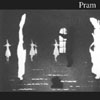 Since the late '80s, the Birmingham, UK quartet Pram has released a steady stream of albums and EPs marked with a cinematic and childlike character. Their obsession with dolls, toys and all things antiquated and ephemeral (as evidenced in titles like "Penny Arcade" and "Paper Hats", not to mention the band's name and their album artwork) give me the impression that they should be scoring films for the Brothers Quay.
Since the late '80s, the Birmingham, UK quartet Pram has released a steady stream of albums and EPs marked with a cinematic and childlike character. Their obsession with dolls, toys and all things antiquated and ephemeral (as evidenced in titles like "Penny Arcade" and "Paper Hats", not to mention the band's name and their album artwork) give me the impression that they should be scoring films for the Brothers Quay.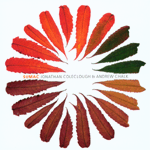 In print once again is the CD edition of "Sumac," a 71+ minute extended version of the same track which originally appeared on a one-sided transparent 12" single released in 1997 by Robot. For the duration of the track, a solid bass tone underscores while unidentifiable flying objects and whispery homemade wind instruments play and reverberate madly.
In print once again is the CD edition of "Sumac," a 71+ minute extended version of the same track which originally appeared on a one-sided transparent 12" single released in 1997 by Robot. For the duration of the track, a solid bass tone underscores while unidentifiable flying objects and whispery homemade wind instruments play and reverberate madly.
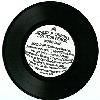 Amidst the flurry of 21st Century Throbbing Gristle activity quietlycomes something new from Genesis P-Orridge. The appearance of this 7"is modest enough—black vinyl with no more than credits on the whitelabel and a see-through sleeve—but what's hidden within the grooves ismuch more colorful. Side A is a collaboration with Carl Abrahamsson andThomas Tibert, now known as Cotton Ferox (formerly known as WhiteStains circa their 1990 collaboration with P-Orridge on At Stockholm).The foundation of "Word Ship" seems to be ethnic percussion loops as anambient haze fills in patches like a fog. Genesis matter-of-factlyanswers his own questions, like "where do you live?," "I travel,""where are you from?," "I just travel," "where were you born?," "I'malways traveling," "what do you do?," "I travel," and finally, "wherewould you be?," "traveling." The track taps the same sort ofpsychedelic dream vibe of Psychic TV's under appreciated Trip Resetalbum from 1996. The "Cosmopolitan Dub" is altogether differentmusically with more sound effects and chorus-effected beats. Side B isby Thee Majesty, GP-O's post-PTV group with Bryin Dall on guitars andLarry Thrasher on percussion and samplers. "Soul Searching" wasrecorded on Alcatraz, oddly enough, and complements the sound of theother side nicely. Genesis recites words in a narcotic deadpan over adirge and deep drum loop reminiscent of PTV's quasi-tribal-technoperiod. What a pleasant surprise. I'm happy to hear Genesis and friendsfurther explore these auras. Side B also includes 23 (of course) lockedgrooves, recycled matter from the songs, by Deftly-D of VoidstarProductions. More blasts from the past are on the way as much ofPsychic TV's back catalog is being reissued by the UK's VoiceprintRecords, beginning in March.
Amidst the flurry of 21st Century Throbbing Gristle activity quietlycomes something new from Genesis P-Orridge. The appearance of this 7"is modest enough—black vinyl with no more than credits on the whitelabel and a see-through sleeve—but what's hidden within the grooves ismuch more colorful. Side A is a collaboration with Carl Abrahamsson andThomas Tibert, now known as Cotton Ferox (formerly known as WhiteStains circa their 1990 collaboration with P-Orridge on At Stockholm).The foundation of "Word Ship" seems to be ethnic percussion loops as anambient haze fills in patches like a fog. Genesis matter-of-factlyanswers his own questions, like "where do you live?," "I travel,""where are you from?," "I just travel," "where were you born?," "I'malways traveling," "what do you do?," "I travel," and finally, "wherewould you be?," "traveling." The track taps the same sort ofpsychedelic dream vibe of Psychic TV's under appreciated Trip Resetalbum from 1996. The "Cosmopolitan Dub" is altogether differentmusically with more sound effects and chorus-effected beats. Side B isby Thee Majesty, GP-O's post-PTV group with Bryin Dall on guitars andLarry Thrasher on percussion and samplers. "Soul Searching" wasrecorded on Alcatraz, oddly enough, and complements the sound of theother side nicely. Genesis recites words in a narcotic deadpan over adirge and deep drum loop reminiscent of PTV's quasi-tribal-technoperiod. What a pleasant surprise. I'm happy to hear Genesis and friendsfurther explore these auras. Side B also includes 23 (of course) lockedgrooves, recycled matter from the songs, by Deftly-D of VoidstarProductions. More blasts from the past are on the way as much ofPsychic TV's back catalog is being reissued by the UK's VoiceprintRecords, beginning in March.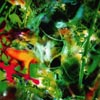 In the 1990s, the Young Gods could have been found releasing albums onsizable international record labels and touring with big acts likeMinistry. Things have been relatively quiet, however, in the last fiveyears for the Swiss-based 21 year old group. Various side projects byAlain Monod as Al Comet and Franz Treichler with Heaven Deconstructionwere indicative of a split, but after recruiting Bernard Trontin ondrums in 1999, the Young Gods began working on this, their sixth studioalbum. Treichler's vocals are more tamed now than before, set against acrystal clear produced version of futuristic space rock. More thanever, the Young Gods sound like The Doors of the space age or apsychedelic version of their fellow countrymen, Yello. Comparisonsalone, however, don't do them justice. The Young Gods explore aslightly creepy, unsettling urban atmosphere. Starting off withstraight-forward drum and bass-influenced electronic rock in"Lucidogen," they get more and more into their own strange breed ofmodern psychedelia. The album builds in a suspense song after songuntil it reaches its peak with "Toi Du Monde," the album's longesttrack. Here, a heavy beat is paired with whispered French and Englishvocals, resulting in a crushing sound with irresistable grooves, andperhaps an attempt for the "Young" Gods not to appear middle-aged, whencompared to the light-hearted instrumental, "Love 2.7." Hopefully,there won't be another 3-4 years until the next album as it seems theYoung Gods have only begun to build up steam again.
In the 1990s, the Young Gods could have been found releasing albums onsizable international record labels and touring with big acts likeMinistry. Things have been relatively quiet, however, in the last fiveyears for the Swiss-based 21 year old group. Various side projects byAlain Monod as Al Comet and Franz Treichler with Heaven Deconstructionwere indicative of a split, but after recruiting Bernard Trontin ondrums in 1999, the Young Gods began working on this, their sixth studioalbum. Treichler's vocals are more tamed now than before, set against acrystal clear produced version of futuristic space rock. More thanever, the Young Gods sound like The Doors of the space age or apsychedelic version of their fellow countrymen, Yello. Comparisonsalone, however, don't do them justice. The Young Gods explore aslightly creepy, unsettling urban atmosphere. Starting off withstraight-forward drum and bass-influenced electronic rock in"Lucidogen," they get more and more into their own strange breed ofmodern psychedelia. The album builds in a suspense song after songuntil it reaches its peak with "Toi Du Monde," the album's longesttrack. Here, a heavy beat is paired with whispered French and Englishvocals, resulting in a crushing sound with irresistable grooves, andperhaps an attempt for the "Young" Gods not to appear middle-aged, whencompared to the light-hearted instrumental, "Love 2.7." Hopefully,there won't be another 3-4 years until the next album as it seems theYoung Gods have only begun to build up steam again. 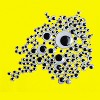 With last year's Octopus Off-Broadway,Parlour showed their rare ability to set your cerebral cortex ablazetrack after track. The album just never let up. In keeping with thistheme, Tim Furnish and Co. release Googler, only nine monthsafter Parlour's debut, not letting fans of the first album catch theircollective breath. From the looks of things, Parlour may be able tokeep up this pace. All of these tracks were recorded three to fiveyears ago, suggesting that this group has a lot of music in the canwaiting merely for polishing and mixing. It's anything but canned,though: Googler is certainly a polished release. Again, Parlouris able to keep me glued to the speakers with infectious grooves andtrippy elements. From the first track, it's almost business as usual on"Jololinine," where interweaved guitar lines and thudding bass lay thegroundwork for percussions, both real and sampled. "Distractor" isalmost a departure, with a workhorse beat and driving energy, driven byan almost manic bassline and steady powerful drums. Then it's back toclassic Parlour: "Over the Under" is the Spider-Man theme of the 21stcentury—an underneath-the-skin builder with great effects and hypnoticrhythm. Parlour just make it all sound so easy. Maybe too easy. Some ofthe same tricks on Octopus are also here, with "Hop Pife,"containing the same eerie effect from the first track on that album butextending it out far further and with greater success. Thus, eventhough you may hear some of the same elements you've heard before, themusic never bores you. "Pife" is one of the album's best tracks, thesoundtrack to any number of my future dreams with no explanation, andalso its longest. The album closer, "Svrendikditement" brings it allhome. Distorted beat samples, keyboard washes, and xylophone make forstrange bedfellows, but it's still utterly compelling. I call it a vastimprovement. The song "Over the Under" is available in its entiretyover at Temporary Residence.com if the 60-second samples below don'tsatisfy.
With last year's Octopus Off-Broadway,Parlour showed their rare ability to set your cerebral cortex ablazetrack after track. The album just never let up. In keeping with thistheme, Tim Furnish and Co. release Googler, only nine monthsafter Parlour's debut, not letting fans of the first album catch theircollective breath. From the looks of things, Parlour may be able tokeep up this pace. All of these tracks were recorded three to fiveyears ago, suggesting that this group has a lot of music in the canwaiting merely for polishing and mixing. It's anything but canned,though: Googler is certainly a polished release. Again, Parlouris able to keep me glued to the speakers with infectious grooves andtrippy elements. From the first track, it's almost business as usual on"Jololinine," where interweaved guitar lines and thudding bass lay thegroundwork for percussions, both real and sampled. "Distractor" isalmost a departure, with a workhorse beat and driving energy, driven byan almost manic bassline and steady powerful drums. Then it's back toclassic Parlour: "Over the Under" is the Spider-Man theme of the 21stcentury—an underneath-the-skin builder with great effects and hypnoticrhythm. Parlour just make it all sound so easy. Maybe too easy. Some ofthe same tricks on Octopus are also here, with "Hop Pife,"containing the same eerie effect from the first track on that album butextending it out far further and with greater success. Thus, eventhough you may hear some of the same elements you've heard before, themusic never bores you. "Pife" is one of the album's best tracks, thesoundtrack to any number of my future dreams with no explanation, andalso its longest. The album closer, "Svrendikditement" brings it allhome. Distorted beat samples, keyboard washes, and xylophone make forstrange bedfellows, but it's still utterly compelling. I call it a vastimprovement. The song "Over the Under" is available in its entiretyover at Temporary Residence.com if the 60-second samples below don'tsatisfy. 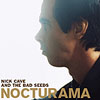 After two excellent albums that marked a daring new direction, it seemsthat Nick Cave has decided to stop and smell the roses. This album ismore a reflection on the twenty years of music he has made with the BadSeeds than it is a step forward. Instead of picking up where 2001's No More Shall We Partleft off, Cave has attempted to craft an album that marries the rawsound of his earlier releases with his more refined recent efforts. Theresult, unfortunately, is a schizophrenic album whose best songs sufferdue to a lack of cohesion.
After two excellent albums that marked a daring new direction, it seemsthat Nick Cave has decided to stop and smell the roses. This album ismore a reflection on the twenty years of music he has made with the BadSeeds than it is a step forward. Instead of picking up where 2001's No More Shall We Partleft off, Cave has attempted to craft an album that marries the rawsound of his earlier releases with his more refined recent efforts. Theresult, unfortunately, is a schizophrenic album whose best songs sufferdue to a lack of cohesion.It's not that Nocturama is badfrom start to finish, what really plagues it is its uneven quality.Cave fails in properly directing the Bad Seeds to create a mood to thealbum. While the opening tracks are very solid, they hold too close tothe path set by the last two albums and make little progress. Thestrikingly rocking (and horrible) "Dead Man in My Bed" provides anawkward pit stop in the middle of the album. This song sees Caveregress light years lyrically, and muscally it sounds as if he istrying to force himself to reclaim the explosive energy of earlyreleases. While it is a relief that he immediately retreats back to thecalm and collected sound he has clearly become more comfortable with,Cave's placement of this track right in the middle makes the album adifficult listen. This track would have worked better if placed towardsthe end of the album, as is done with the intense closer. "Babe I'm OnFire" is a great success and gives evidence that despite, "Dead Man,"Cave is still able to rant along perfectly when the Bad Seeds decide toplay their hardest. Every second of this 15-minute long tirade isabsolutely essential and both astonising and disappointing. For if Cavecould have found the proper bridge from "Wonderful Life" to "Babe I'mOn Fire," instead of a messy collection of occasionally uninspiredsongs, then this would have been a much better record.
Nick Cave has raised the bar so high that expectations demand a great album, not simply just a few great songs. Nocturamawas recorded in seven days and it shows. The Bad Seeds at their bestare not spontaneous but deliberate, lets hope the next one takes thatinto consideration.
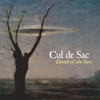 Tradition and innovation are powerful forces, always tugging, tearingat each other, one struggling to hold on, and the other struggling tobreak free. This is a tension observable right now in our culture, asthe means of producing electronic music becomes available to mostanyone with a personal computer and an idea, these new concepts of whatconstitutes artistic expression often clash with established notions ofwhat makes something real or true. These are cultural growing pains, asensation of vertigo that comes with progress and the flexing ofboundaries. On Death of the Sun,Cul de Sac takes both tradition and innovation and uses themingeniously to create harmony from tension. The members of Cul de Sacbegan by assembling a myriad of sources and samples from antique vinylrecords to ambient forest and city soundscapes. These sources were thenelectronically manipulated and modified to serve as a musical spine forthe piece. Throughout the album, fuzzy, distant voices drift inmomentarily amidst clicks and static. The electronic foundation issolid, and its intricacy makes this an amazing headphone listen. Addingeven more layers of complexity, the members of Cul de Sac respond tothis electronic foundation, counter-pointing the synthetic and thetreated with acoustic instruments like violins, guitars, melodicas, anddrums. Their response was not to canned, prepared pieces, but toelectronic sequences that were played live and on the spot duringrecording. On "Dust of Butterflies," a lone acoustic guitar unfolds amusic box melody that itself is sampled and looped over theelectronically modified snapshot of a five-part harmony found on arecord from 1933. "Turok, Son of Stone" consists of a building chorusof primeval percussion that is visceral in its attraction. Thepercussive theme continues through the dark, insistent "Death of theSun," churning dirt and dust before fading away with an aching violin.The final piece, "I Remember Nothing More" samples a minute of an old78-RPM record of Creole songs released in 1940. The singer, AdelaideVan Wey's voice peeks through the tender acoustic guitar, the vinylscratches and fuzz casting her like a faraway, fading transmission. Theeffect is eerie, listening to her soulfulness repurposed in thismanner. The clash between traditional and innovative comes togetherhere, and for a moment, Cul de Sac has made them one concept, oneexpression of clarity. Death of the Sun is a fascinating album,fusing so many seemingly dissonant threads and melding innovative ideasand techniques with traditional sounds and sensibilities.
Tradition and innovation are powerful forces, always tugging, tearingat each other, one struggling to hold on, and the other struggling tobreak free. This is a tension observable right now in our culture, asthe means of producing electronic music becomes available to mostanyone with a personal computer and an idea, these new concepts of whatconstitutes artistic expression often clash with established notions ofwhat makes something real or true. These are cultural growing pains, asensation of vertigo that comes with progress and the flexing ofboundaries. On Death of the Sun,Cul de Sac takes both tradition and innovation and uses themingeniously to create harmony from tension. The members of Cul de Sacbegan by assembling a myriad of sources and samples from antique vinylrecords to ambient forest and city soundscapes. These sources were thenelectronically manipulated and modified to serve as a musical spine forthe piece. Throughout the album, fuzzy, distant voices drift inmomentarily amidst clicks and static. The electronic foundation issolid, and its intricacy makes this an amazing headphone listen. Addingeven more layers of complexity, the members of Cul de Sac respond tothis electronic foundation, counter-pointing the synthetic and thetreated with acoustic instruments like violins, guitars, melodicas, anddrums. Their response was not to canned, prepared pieces, but toelectronic sequences that were played live and on the spot duringrecording. On "Dust of Butterflies," a lone acoustic guitar unfolds amusic box melody that itself is sampled and looped over theelectronically modified snapshot of a five-part harmony found on arecord from 1933. "Turok, Son of Stone" consists of a building chorusof primeval percussion that is visceral in its attraction. Thepercussive theme continues through the dark, insistent "Death of theSun," churning dirt and dust before fading away with an aching violin.The final piece, "I Remember Nothing More" samples a minute of an old78-RPM record of Creole songs released in 1940. The singer, AdelaideVan Wey's voice peeks through the tender acoustic guitar, the vinylscratches and fuzz casting her like a faraway, fading transmission. Theeffect is eerie, listening to her soulfulness repurposed in thismanner. The clash between traditional and innovative comes togetherhere, and for a moment, Cul de Sac has made them one concept, oneexpression of clarity. Death of the Sun is a fascinating album,fusing so many seemingly dissonant threads and melding innovative ideasand techniques with traditional sounds and sensibilities.  While not ground-breaking, this certainly is a fun LP. A decentlyturned out LP is always fun. There's something generous and luxuriousabout them and all the more so in these times of miserable little"jewel cases," measly graphics and microscopic text. The cover of thisLP is satisfyingly nostalgic, looking like a French fusion record fromthe early eighties with, for some reason, a picture of the Osmondfamilly. The inner sleeve is simply delightful - you really have to seeit. If this had been put out on a CD it would seem a scam since it'sonly about 31 minutes long. As for the music, nearly all the elementswe have learned to dread in French music, avant-garde or otherwise,are, if not exactly absent, adequately restrained. Of the star-studdedline up, Jerome Noetinger, Lionel Marchetti and Jean Pallandre arenoted as playing magnétophone à bandes while Marc Pichelin plays synthé analogique and Laurent Sassi handles the enregistrement/mixage (live). It is a fairly chaotic collage of material, sounding sort of like improvised musique concrèteand it's the surprise and contrast of the different material that isthe primary technique. While things eventually get excited enough to benoise art, the starting point is a rather self-concious sound art.There are many references to European music of the 50s and 60s, inparticular the Schaeffer and Henri and the electronic music of Cologneand specifically Kotakte, though I don't think it uses direct quotes.It isn't in bad taste but, frankly, the fashion for this materialbecame tiresome years ago. The sound of variable-speed tape machinesdominate with tapes starting and stopping, rewinding, slowing andaccelerating and the sound of tape being manually yanked through theplayer. In many aspects the music is very familiar but the overallcombination of elements is not and is actually quite fresh and, whilethere's nothing that's truly remarkable or of dazzling brilliance, itis indeed fun.
While not ground-breaking, this certainly is a fun LP. A decentlyturned out LP is always fun. There's something generous and luxuriousabout them and all the more so in these times of miserable little"jewel cases," measly graphics and microscopic text. The cover of thisLP is satisfyingly nostalgic, looking like a French fusion record fromthe early eighties with, for some reason, a picture of the Osmondfamilly. The inner sleeve is simply delightful - you really have to seeit. If this had been put out on a CD it would seem a scam since it'sonly about 31 minutes long. As for the music, nearly all the elementswe have learned to dread in French music, avant-garde or otherwise,are, if not exactly absent, adequately restrained. Of the star-studdedline up, Jerome Noetinger, Lionel Marchetti and Jean Pallandre arenoted as playing magnétophone à bandes while Marc Pichelin plays synthé analogique and Laurent Sassi handles the enregistrement/mixage (live). It is a fairly chaotic collage of material, sounding sort of like improvised musique concrèteand it's the surprise and contrast of the different material that isthe primary technique. While things eventually get excited enough to benoise art, the starting point is a rather self-concious sound art.There are many references to European music of the 50s and 60s, inparticular the Schaeffer and Henri and the electronic music of Cologneand specifically Kotakte, though I don't think it uses direct quotes.It isn't in bad taste but, frankly, the fashion for this materialbecame tiresome years ago. The sound of variable-speed tape machinesdominate with tapes starting and stopping, rewinding, slowing andaccelerating and the sound of tape being manually yanked through theplayer. In many aspects the music is very familiar but the overallcombination of elements is not and is actually quite fresh and, whilethere's nothing that's truly remarkable or of dazzling brilliance, itis indeed fun.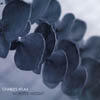 For those of us who do not have our very own lavish, sunlight-flooded house with a private lake in the backyard, the trio of Charles Atlas has captured the all-encompassing scenery, beauty, and fragrant air, and packaged it for our livingrooms and headsets. Once a pet project of Charles Wyatt (former guitarist for Dart and the one who clearly put the "magic" in early Piano Magic recordings), Charles Atlas soon became a fulltime duo with the fulltime involvement of former Rosemarys keyboardist Matt Greenberg. On this, the fourth album, they have expanded to a truly mesmerising ensemble with the addition of Sascha Galvagna.
For those of us who do not have our very own lavish, sunlight-flooded house with a private lake in the backyard, the trio of Charles Atlas has captured the all-encompassing scenery, beauty, and fragrant air, and packaged it for our livingrooms and headsets. Once a pet project of Charles Wyatt (former guitarist for Dart and the one who clearly put the "magic" in early Piano Magic recordings), Charles Atlas soon became a fulltime duo with the fulltime involvement of former Rosemarys keyboardist Matt Greenberg. On this, the fourth album, they have expanded to a truly mesmerising ensemble with the addition of Sascha Galvagna.
 In 1981, The Clean's "Tally Ho!" single was the second release of the then nascent Flying Nun record label of New Zealand. This fact is largely responsible for establishing The Clean as the archetypes of the New Zealand/Flying Nun sound which sprung up mostly in the 1980's (and has persisted to the present). The sound was poppy, drony, distorted, melodic, tremulous, and brilliant. But as The Clean Anthology proves, the band did not just embrace this school of sound more fully than anyone else: they helped build it.
In 1981, The Clean's "Tally Ho!" single was the second release of the then nascent Flying Nun record label of New Zealand. This fact is largely responsible for establishing The Clean as the archetypes of the New Zealand/Flying Nun sound which sprung up mostly in the 1980's (and has persisted to the present). The sound was poppy, drony, distorted, melodic, tremulous, and brilliant. But as The Clean Anthology proves, the band did not just embrace this school of sound more fully than anyone else: they helped build it.
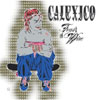 Calexico's lighthearted remix (or rather, remake) of Goldfrapp's"Human" single was my first exposure to the band, and it held a strongappeal to my kitschy desires. So, when presented with their newfull-length, I was expecting a fluffy yet fun slice of indie rock witha twinge of Mexican folk music. What I found instead was an album withan extraordinary blend of depth, humor and beauty for what isessentially an accessible rock album. Does this record make you want toget off your ass and flamenco dance? Absolutely; but it's alsosentimental, even mournful at times. Calexico, while heralding theirsouth-of-the-border aesthetic, don't rely on it as a sole gimmick.Don't get me wrong, that folksy lightheartedness is definitely present:"Sunken Waltz," "Guero Canelo" and "Attack El Robot! Attack!" comecomplete with the festive blaring trumpets and pedal steel and nylonguitars expectant of traditional Latin music. In fact, it is possiblythe band's use of stringed instruments in general that is their forte.The magnificent, melancholy "Black Heart" achieves its effectivenessmostly as a result of the heartbreaking violins. "The Book and theCanal" even recalls the band's Quarterstick labelmates, Rachel's withits somber stringed orchestrations and piano, while "Not Even StevieNicks ..." prevents a lapse into oversentimentalism with a dose ofhumor.
Calexico's lighthearted remix (or rather, remake) of Goldfrapp's"Human" single was my first exposure to the band, and it held a strongappeal to my kitschy desires. So, when presented with their newfull-length, I was expecting a fluffy yet fun slice of indie rock witha twinge of Mexican folk music. What I found instead was an album withan extraordinary blend of depth, humor and beauty for what isessentially an accessible rock album. Does this record make you want toget off your ass and flamenco dance? Absolutely; but it's alsosentimental, even mournful at times. Calexico, while heralding theirsouth-of-the-border aesthetic, don't rely on it as a sole gimmick.Don't get me wrong, that folksy lightheartedness is definitely present:"Sunken Waltz," "Guero Canelo" and "Attack El Robot! Attack!" comecomplete with the festive blaring trumpets and pedal steel and nylonguitars expectant of traditional Latin music. In fact, it is possiblythe band's use of stringed instruments in general that is their forte.The magnificent, melancholy "Black Heart" achieves its effectivenessmostly as a result of the heartbreaking violins. "The Book and theCanal" even recalls the band's Quarterstick labelmates, Rachel's withits somber stringed orchestrations and piano, while "Not Even StevieNicks ..." prevents a lapse into oversentimentalism with a dose ofhumor.Though only 47 minutes long, Feast of Wirehas a sound so expansive, it's difficult to believe they packed so muchrichness into such a short span of time. The liner notes document theexhaustive list of instruments (and guest musicians!) present on thealbum. Calexico could no doubt persuade even the most jaded music snobthat originality and fresh ideas are still to be found within theoverwrought annals of indie rock.



